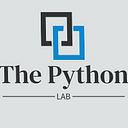Member-only story
A Gentle Introduction to Advanced Quantitative Finance in Python
In this tutorial, we will explore various advanced concepts and techniques in quantitative finance using the Python programming language. We will cover topics such as financial data analysis, portfolio optimization, risk managementand more.
Python has become a popular choice among quantitative finance professionals due to its simplicity, versatility and extensive libraries. We will leverage powerful libraries such as NumPy, pandas, matplotliband scikit-learn to perform various financial calculations and visualizations.
To get started, we will need to install a few Python libraries. Open your terminal or command prompt and run the following command to install the necessary libraries:
pip install numpy pandas matplotlib scikit-learn yfinance mplfinance plotlyOnce the installation is complete, we can begin our journey into advanced quantitative finance with Python.
Section 1: Retrieving Financial Data
Before we dive into the advanced concepts, let’s start by retrieving financial data using Python. We will use the yfinance library, which allows us to download historical stock data directly from Yahoo Finance.
